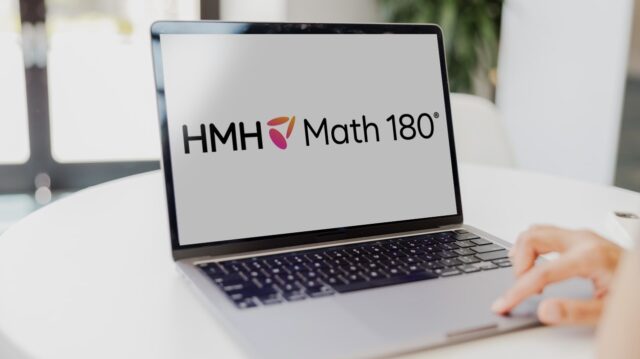
In this article, we investigate what constitutes a “sentence” in mathematics and how to determine whether a sentence is true or false. We then discuss open sentences, where one of the values in the sentence is not given and the student must determine it. This is one way of introducing basic ideas about variables and algebra.
Students as young as first graders learn about true and false sentences and have already been solving open sentences without knowing the terminology. (For example: 6 and what number make 10?) The explanations and activities that follow are most appropriate for students in Grades 4–5 but can be adapted for younger students.
- Key ‘I Can’ Statement: I can decide whether a mathematical sentence is true or false; if a mathematical sentence is open, I can determine what value(s) make it true.
What Is a Mathematical Sentence?
Think about what makes a sentence in English. A sentence is a complete thought, typically containing at least a subject and a verb. Mathematics can have sentences too, although they look a little different. In math, a sentence is a “complete idea” containing an equality or inequality symbol and an expression on either side. The following are all examples of mathematical sentences.
\[3+2=5\]
\[\frac{1}{2}+\frac{3}{4}\neq\frac{3}{2}-\frac{1}{3}\]
\[10-1>3+\mathord{?}\]
Notice that if there weren’t an equality or inequality symbol, then the combination of math symbols forms an expression, not a sentence.
What Is a True Mathematical Sentence?
A mathematical sentence is true when the statement it makes is mathematically accurate. For example, this is a true sentence:
\[3+2=5\]
Most mathematical sentences encountered in the real world look a bit more complicated, however. Consider the following sentence, which is also true because both sides of the equals sign are equal to 5.
\[17-12=\frac{12}{2}-1\]
A common way to physically represent a true equation is using a balance like the one shown below. When the balance is even, then the quantities on both sides are equal. You can represent a true equation by having the same quantity on both sides (for example, one 10-block and ten 1-blocks) or by having equal weights (for example 9 cubes that are one gram each and one ball that weighs 9 grams). Note that representing inequalities on a pan balance might require not just paying attention to whether both sides are equal, but also which side is lesser or greater.

What Is a False Mathematical Sentence?
A mathematical sentence is false when the mathematical statement it makes is not accurate. So, for example, this is a false sentence:
\[3+2=9\]
Like true equations, it can become harder to determine whether a sentence is false when both sides of the equation are expressions that require evaluating. Here is another false sentence, where the left side is equal to 5, but the right side is not.
\[3+2=\frac{13}{3}+2\]
Notice in particular how important the order of operations is in determining whether a sentence is true. If students incorrectly add \(\frac{13}{3}\) and \(2\) to get \(\frac{15}{3}\), then they might incorrectly think the sentence above is true!
True and False Sentences in the Real World
If you are looking for how the concept of true and false mathematical sentences connects to the real world, consider connecting it to coding. One way to explain how computers can turn lines of code into websites, apps, and games is by stating that computers break everything down into simple true/false questions such as ”did the user press that key?” or ”did the player reach the end of the level?” By studying true and false mathematical sentences, students are on their way to becoming programmers!
Unsurprisingly, true and false sentences in the real world can get much more involved than the sentences used in math class. Introduce more complicated examples for students who are ready, and encourage students to compare the different ways they determined that the same sentence was false. The sentence below, for example, could open the door to a rich discussion around benchmark numbers and unlike denominators. Can any students explain why the following sentence is false without actually calculating the fraction sums?
\[\frac{1}{2}+\frac{3}{4}=\frac{3}{2}+\frac{1}{3}\]
What Is an Open Mathematical Sentence?
Now it’s time to continue with the lesson. Show an equation with a missing value. Here’s an example, although note that when presenting this to students, you could replace the question mark with an open box (or any other shape):
\[6+\mathord{?}=14\]
Ask students what they could replace the question mark with. In other words, ask students how to solve open sentences like this. Students should recognize that the value 8 makes the equation true. Show that any expression equivalent to 8 would also solve the sentence, for example \(\frac{16}{2}\) or \(4\times 2\), and have students think of other possible expressions. Sentences like this—with “open” parts that can be filled in—are called open sentences.
Share these or similar examples of open sentences in mathematics with students, drawing attention to the question mark being in different locations.
\[2+4=5+\mathord{?}\]
\[0+\mathord{?}+\frac{1}{2}=\frac{1}{2}+\frac{1}{4}+0\]
\[3\div 7=\mathord{?}\times\frac{1}{7}\]
If students are ready, you could introduce more complicated equations to show that one open sentence can have two values that make the sentence true (in both of the equations below, the solutions are 5 and –5).
\[\mathord{?}\cdot\mathord{?}=25\]
\[|3\cdot\mathord{?}|=15\]
You could also show that open sentences can have infinitely many values that make the sentence true. With more advanced sentences like these, it may help to have students make a list of everything that could go into the unknown value and create a conjecture.
\[10<3+\mathord{?}\]
\[19+\mathord{?}\neq 19+1\]
\[0\cdot 3=0\cdot\mathord{?}\]
One final thought regarding this lesson, which applies especially if you have students who speak languages that use different alphabets. Draw attention to the question mark. Ask what other shapes or symbols your students might put in its place and what placeholder makes it clearest for them. Replace the question mark with different variables, including characters from other alphabets, and see if there are symbols your students would prefer to use. This connects open sentences in mathematics directly to algebra, too, where a single value is abstracted into a range of possible values.

Activities to Practice True, False, and Open Sentences
Activity 1: Identify sentences as true or false
Make sure students are clear on what it means for a math sentence to be true or false. Prepare a list of 5–10 sentences that match what you’re currently teaching. Simple examples like \(1+6=7\) allow entry points for all students and ensure students are using the same vocabulary. You can make examples more difficult by changing magnitude (for example, using 4-digit numbers), incorporating fractions or decimals, or making the expressions involved require more steps to evaluate.
As you walk through example sentences, facilitate a discussion not just around whether they’re true or false math statements, but why they’re true or false. Draw attention to the different ways students approach the problems. Consider questions like the following:
- Which side of the equation did you pay attention to first? Why?
- How can you check your work?
- What is another sentence that means the same thing as this sentence?
Activity 2: Have students create true and false sentences
Now try having students create their own sentences. Task them with creating three true sentences and three false sentences. This task in particular has a low floor and high ceiling. For students who are ready, consider incorporating additional constraints, such as “must use a fraction,” “must contain parentheses,” or “all numbers must be prime.”
Depending on the class, there are different ways to include other students and make the activity interactive. Students could exchange their sentences with a partner, who must determine which sentences are true and which ones are false. Alternatively, students could write each sentence on a card and then place all of the cards in a container. Students can then take turns drawing cards and identifying them as either true or false.
Activity 3: Tell a story about a mathematical sentence
Stories are a way that all of your students can relate mathematics to ideas and events that they find relevant. You can model simple examples, such as inventing a story for \(1+6=7\): ”Nara has 1 tube of paint. Luke has 6 tubes of paint. How many tubes of paint do they have if they paint together?”
Then you can either supply sentences (such as any of the examples shown within this article) or have students create their own, along with a story to accompany them. Encourage students to be creative and detailed in their storytelling. This is an opportunity to not only ground math in the real world, but also have students practicing literacy skills.
***
Deliver equation practice using any of our math solutions, which include personalized lessons, math video games, and rigorous assessment.
Get our FREE guide "Optimizing the Math Classroom: 6 Best Practices."












